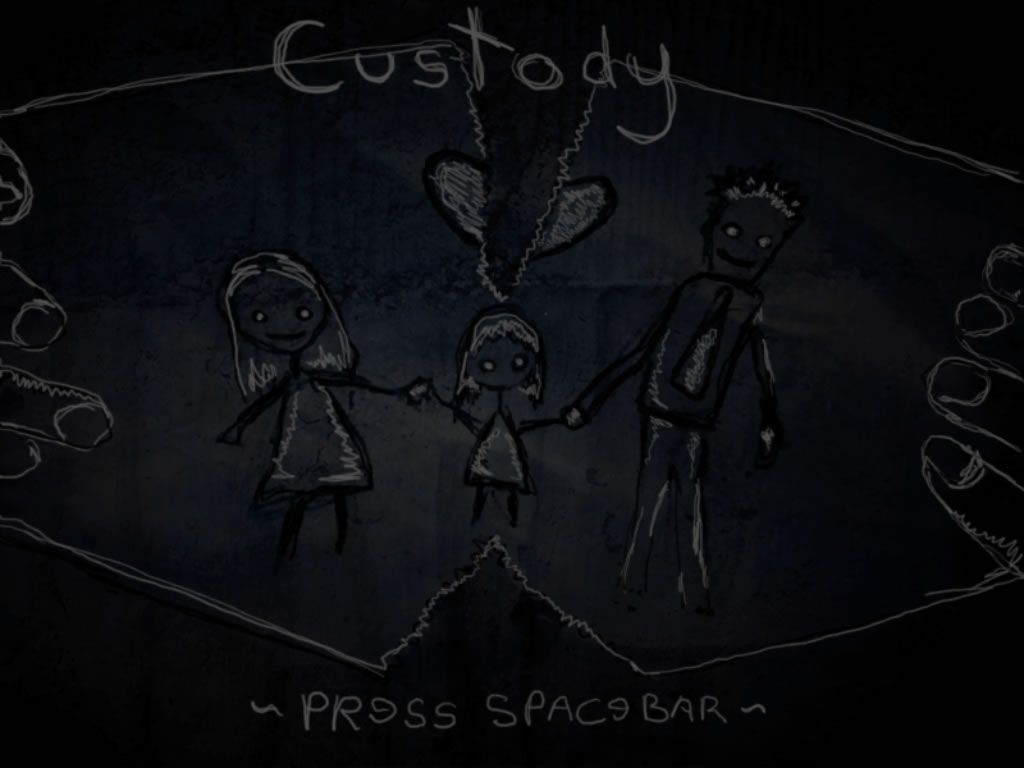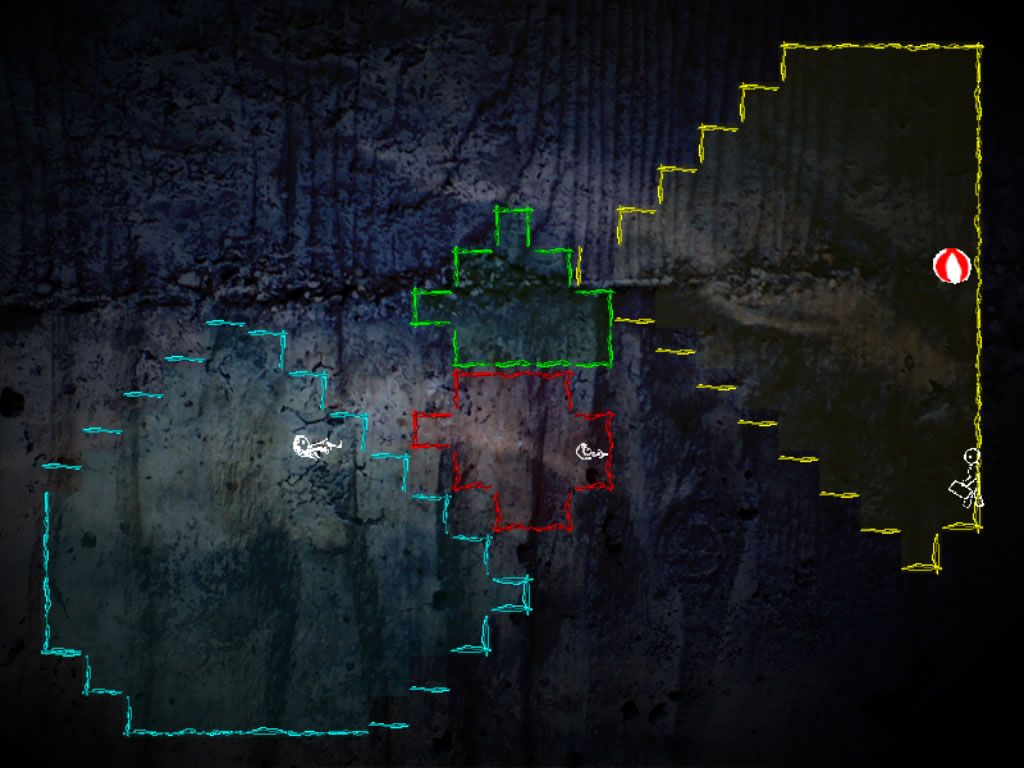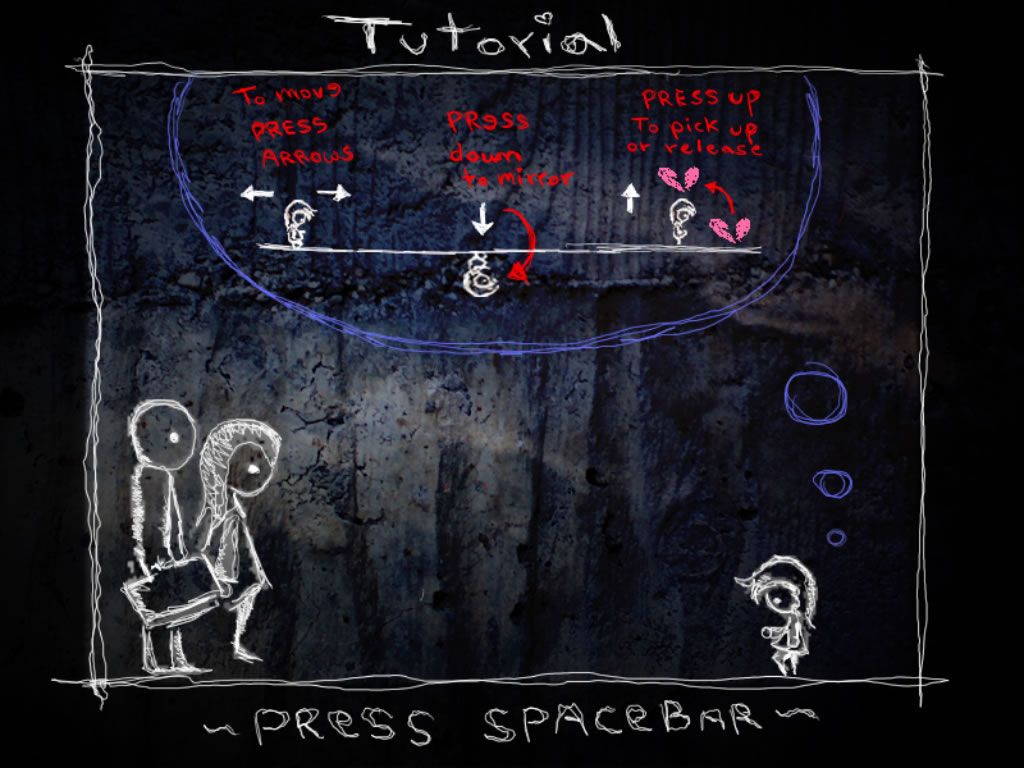Retro Replay Review
Gameplay
Custody places you in the unsteady shoes of a 12-year-old child caught between two divorced parents, each staking out their territory on the left and right sides of the screen. Your primary interaction is simple: move within a green zone or a red zone, reflecting your presence in one parent’s life or the other’s. That tug-of-war dynamic immediately sets the emotional tone, turning mere zone-hopping into a delicate balancing act with psychological weight.
Along the way, objects randomly spawn in the central neutral area. These mundane trinkets—blocks, balls, everyday toys—can be picked up, carried, and dropped to either side. But nothing lasts forever: each object disappears after a short lifespan, reinforcing the game’s theme of impermanence and the fleeting nature of childhood possessions and memories.
One of Custody’s most intriguing mechanics is the “mirror movement” feature. With a simple button press, your character’s movements reflect across the vertical axis, creating a ghostly counterpart in the opposite zone. This mechanic not only adds a layer of strategic depth—manipulating which parent sees which action—but also serves as a visual metaphor for the child’s split identity.
Graphics
Visually, Custody opts for stark minimalism. The screen is divided into two saturated color fields—green on one side, red on the other—symbolizing opposing parental worlds. The child character and interactable objects are rendered in wireframe or flat silhouettes, emphasizing emotional impact over detailed art.
Though not graphically ambitious by mainstream standards, the game’s aesthetic choices deliver an art-installation feel. The momentary appearance of each object, rendered in simple shapes and primary colors, evokes a sense of fragility. The disappearance animations are graceful yet poignant, reminding players that nothing in this divided world is permanent.
The lack of background detail and environmental texture is intentional. By stripping away distractions, Custody directs your focus to the emotional tug of war and the fleeting objects that pass through your hands. In doing so, every movement, color shift, and disappearance becomes an expressive statement.
Story
At its core, Custody presents a poignant narrative about a family fractured by divorce. There is no cutscene or dialogue; instead, the story unfolds through your interactions with space and objects. Each parent’s colored zone, defined by an invisible boundary, represents the emotional and physical limitations they impose on the child’s freedom.
The game’s open interpretation is a strength. Are the fleeting objects tokens of affection, or symbols of the child’s unmet needs? What does mirroring one’s movement say about struggling to please both parents? These questions linger, transforming a few minutes of play into a meditation on responsibility, love, and the costs of separation.
Custody doesn’t offer resolution or closure. There is no “win” state, only the ongoing act of moving between zones, picking up ephemeral items, and considering what’s lost along the way. In this void, players find their own meaning—whether it’s empathizing with the child’s plight or reflecting on the delicate balance of blended families.
Overall Experience
Custody is less of a traditional video game and more of an interactive artwork. Its brevity and simplicity belie the emotional weight it carries. In just a few minutes, players are invited to confront themes of division, agency, and the fleeting nature of childhood moments.
As an experimental Global Game Jam entry, the polish is raw but purposeful. Controls are responsive, visuals are unadorned, and the audio—if present—tends toward minimal ambient tones. This no-frills presentation may feel unconventional for those expecting mainstream production values, yet it perfectly suits the game’s introspective aim.
For potential players seeking a reflective experience, Custody offers an unsettling glimpse into the psychology of divorce from a child’s perspective. It won’t provide hours of escapism or blockbuster thrills, but it will linger in your thoughts long after the objects vanish and the screen goes still.
 Retro Replay Retro Replay gaming reviews, news, emulation, geek stuff and more!
Retro Replay Retro Replay gaming reviews, news, emulation, geek stuff and more!








Reviews
There are no reviews yet.